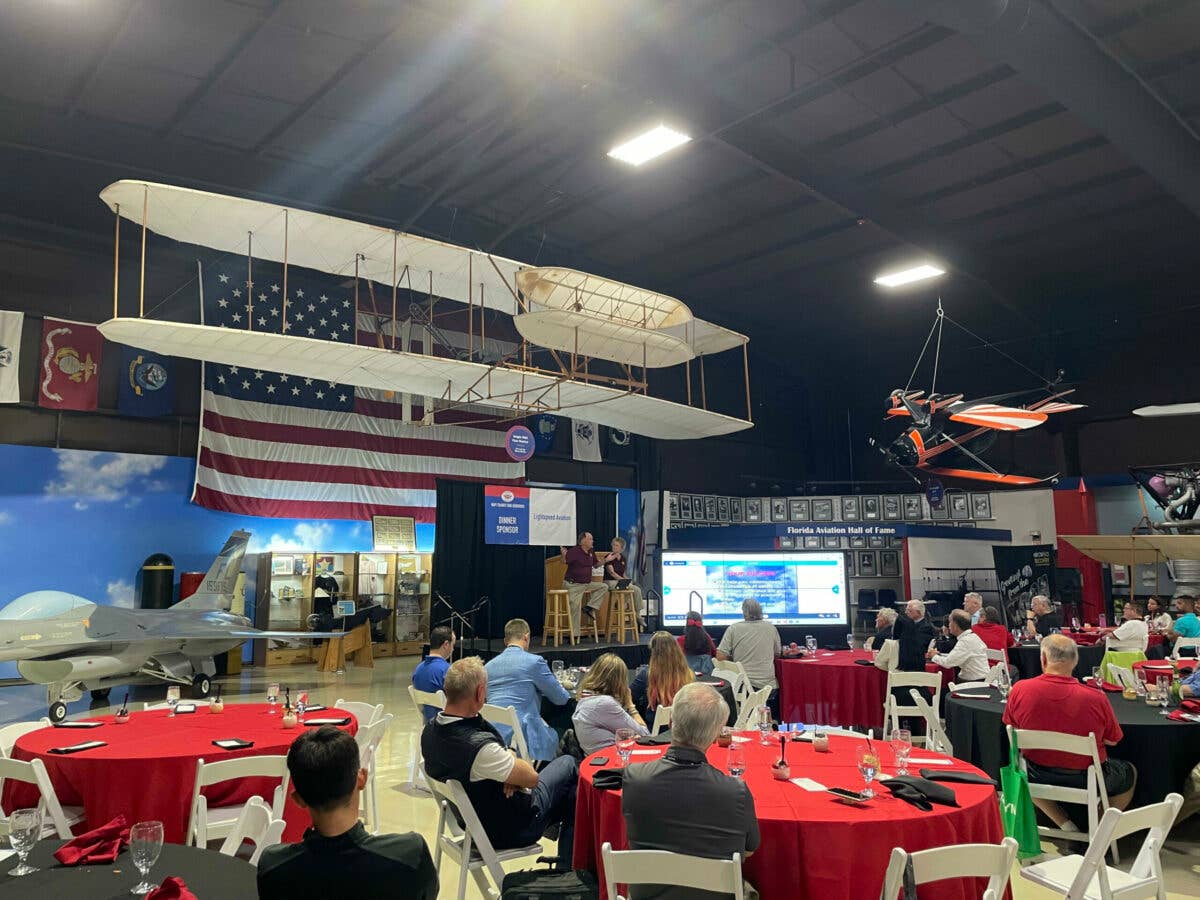Want To Be a Real Instructor?
The first NAFI Summit brought together an expert’s round of experts in flight training to the table.

John and Martha King, founders of Kings Schools, entertained and informed their fellow instructors at the NAFI Summit in Lakeland, Florida, this week. [Julie Boatman]
Though it’s been around for more than 50 years, the National Association of Flight Instructors (NAFI) hosted its first big event this week—a “summit” intended to bring together instructors from all over to discuss, educate, and debate on a range of topics near to our hearts. The tagline, “Come to NAFI Summit, go home a better instructor,” rang true following the largely informative and engaging sessions on Wednesday and Thursday in Lakeland, Florida, at the Florida Air Museum.
I know I learned a few things.
There were about 200 attendees overall, with at least 150 sitting in on both days—a pretty good show for the first of anything. And considering that NAFI has about 7,000 paid members to draw from, it made for a great representative sample of the group.
DPE Panel
The sessions kicked off with a panel of highly experienced designated pilot examiners, including NAFI chair Karen Kalishek, Mary Schu, and Doug Stewart. While the broad topic—to discuss the state of check ride preparation and success—involved every instructor in the room, the conversation quickly zeroed in on the concerns that the panelists saw every day when working with applicants for pilot certification.
According to Schu, who is based in Oregon. there’s a lack of real cross-country solo time, especially for students coming from Part 141 programs. Instead of logging time as the sole occupant of the airplane—and having to make every decision, without the safety net of an instructor beside you—more and more pilots are showing up with “pilot doing duties as pilot in command.” To my ears, this sounds a lot like the classification of time under European Union Aviation Safety Agency (EASA) regs as “supervised solo,” with the instructor still in the right seat but somehow remaining silent.
Really? That’s not how you learn to take responsibility as pilot in command.
The examination pass rate has dropped dramatically over the past five years—roughly and informally to 50 to 60 percent, according to Kalishek, a DPE based in Wisconsin. She is scheduling check rides for March 2024.
Stewart, based in New Hampshire, gave another handy insight—he requires candidates to submit their application via IACRA at least five days prior to the check ride. If things aren’t in order, he can schedule another applicant in their place.
Flight School as a Business
Another fascinating panel that reminded me of my days as the Cessna Pilot Center manager: Your Own Flight Instruction Business. Moderated by flight school owner George Allen, it included Aaron Dabney, Frank Gallagher, and Ned Parks. With roughly 2,000 training organizations in the U.S., there’s a lot of competition. However, by identifying a niche, you can make a successful go at it.
There are also other points to consider.
According to Gallagher, one of the key drivers of success is maintaining a high quality of employees and equipment. One detail that goes a long way? Train your instructors to wipe down the aircraft after the flight and service it like an owner, so that it looks like a clean car picked up from a rental agency.
Dabney, who specializes in CFI to tailwheel instruction, said, “Be able to say concisely what your mission is: How are you different?”
Parks cautioned that, when recruiting and retaining instructors, be wary of using 1099 contractors versus employees on a W-2. As he noted, some schools use 1099s “because it’s cheaper”—but the actual savings is so low, it’s not worth the hazard of running afoul of the contractor-versus-employee regulations in many states. “It is such a small amount of money [in the end],” he said.
The Magenta Guy and GA Type Ratings
One of the highlights for me came in getting to see FLYING contributor Les Abend take the stage with Gary Reeves in walking instructors through the GA Type Rating course they have developed.
Reeves built upon his presentation the day before (The Top 5 Mistakes Good Instructors Make Teaching GPS—I definitely learned a couple that I’ve been making) by walking through how the pair met and what unique steps they take to appeal to an airline pilot transitioning to GA—or flying light aircraft for the first time if they came from the military.
Is there a sneaky way in there to encourage those retired captains to become instructors? You bet. It’s a great idea.
Networking at a High Level
Overall, I came away impressed by the cadre of folks who attended the summit—not just because they were presenting, like Greg Feith, of the Flight Safety Detectives podcast and former senior NTSB accident investigator—but because they wanted to support the organization’s initial effort to raise the level of flight instruction in the U.S.
I was able to catch up and have long talks with executive-level colleagues from Sporty’s, Redbird Flight Simulations, and the FAA. John and Martha King, founders of King Schools, gave the dinner’s keynote with tips from their two books. I had an insurance question answered by a senior leader at Avemco. I made new connections with fellow instructors from the Flying Musicians Association and rekindled lasting friendships with folks from Ortega Aviation Services.
All in all, did I come away a better instructor? We’ll see soon, when I go up for my own flight review—thanks for the tips, Tom Turner!

Subscribe to Our Newsletter
Get the latest FLYING stories delivered directly to your inbox






